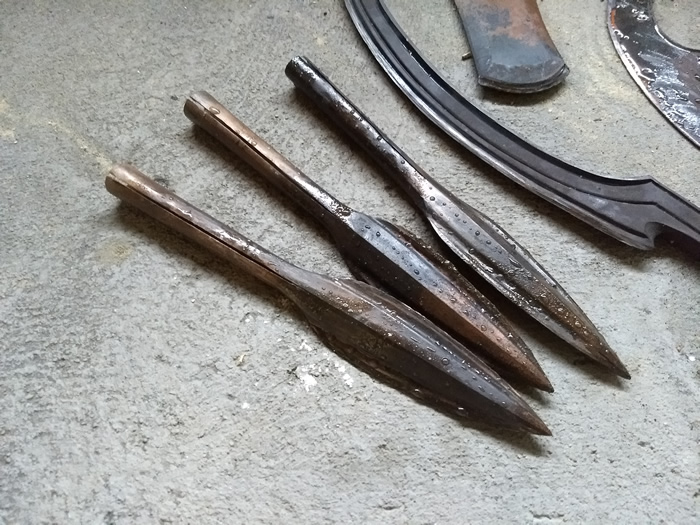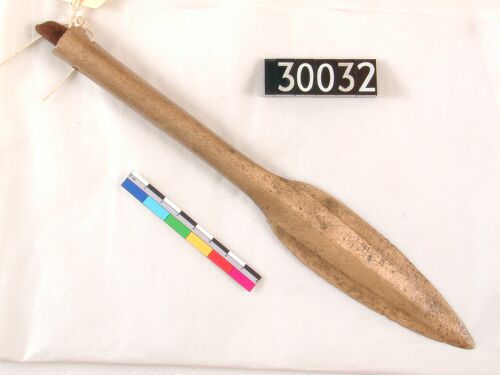THEBES
Home > The spearhead collection >Thebes
Replica of spearhead from Thebes, EgyptWeight: 260 grams - Length:25 cm - Material: bronze (Cu90Sn10) Edge: annealed, hardened through cold hammering, ground - Original: Egyptian collection in University college in London (no 30032); Petrie 1917: H179. |
||
|---|---|---|
NEW KINGDOM SPEARHEAD FROM THEBENWhen the socketed spearhead was finally introduced to Egypt sometime around 1550 BC, it came in the shape familiar from Egypt’s neighbours to the north, in the Levant. This was a spearhead, of varying size, with a relatively long, split socket, and a massive blade with a broad central rib with diamond-shaped cross-section. There seems to be no clear typological differences between New Kingdom spearheads and spearheads from the Levantine Late Bronze Age city states of Ugarit or Byblos. The khopesh shows a similar correspondence between two areas. From a European perspective a significant feature is that sockets remained split throughout the Late Bronze Age in the entire Near East and Aegean. And, as a consequence, blades remained massive and in front of the socket. In Europe on the other hand sockets were not split, and were integrated with the blade, actually more like sockets with edges. The replicated spearhead comes from Theben and belongs to the Egyptian collection in University college in London. The alloy used in the original is unknown, but the replica is made from bronze with 10% tin as tin-bronze became common in the New Kingdom.
|
||
|
The replicated spearhead from Theben, seen from both sides. Top image: fromhttps://www.ucl.ac.uk/museums-static/digitalegypt/tools/spear.html. Bottom: William Flinders Petries 1917: “Tools and weapons illustrated by the Egyptian collection in University college, London, and 2,000 outlines from other sources” (H179). |
|
|
||
 |
From the post-cast treatment of annealing and hammering of edges. |
|
Litterature:W. F. Petries 1917: “Tools and weapons illustrated by the Egyptian collection in University college, London, and 2,000 outlines from other sources”. British School of Archaeology 30. London
|
||
